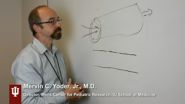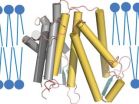In June 2014, the AAP announced a collaborative partnership with Too Small to Fail, a joint initiative of the Bill, Hillary and Chelsea Clinton Foundation and Next Generation. The organizations have committed to promote early literacy and ensure that doctors, parents and caregivers have the information, tools and books they need to promote talking, reading out loud and singing to children every day starting in infancy. "Secretary Clinton's work leading Too Small to Fail and its evolving partnership with pediatricians and parents on early childhood education and literacy reflects the Academy's national priorities," said James M. Perrin, MD, FAAP, president of the AAP. "Fewer than half of children younger than 5 years old are read to daily in our country. For 25 years, programs such as Reach Out and Read have been promoting literacy in exam rooms nationwide, and now, even more pediatricians are taking a stand to spread the news more widely through our recent policy, toolkit and partnership with Too Small to Fail. Talking, reading and singing with young children is a joyful way to build strong and healthy parent-child relationships, foster early language skills and promote children's development." The Books Build Connections toolkit, available online at http://www.aap.org/literacy, incorporates new recommendations on early literacy issued by the AAP in June. In that policy statement, the AAP emphasized literacy—beginning from an infant's very first days—as an "essential" component of primary care visits. As part of the partnership with Too Small to Fail and AAP, Scholastic, Inc. agreed to donate 500,000 new, age-appropriate children's books for distribution through Reach Out and Read, which works with 20,000 medical providers nationwide to promote early reading and give books to 4 million children families annually at pediatric visits.
"Our partnership with the American Academy of Pediatrics is squarely aligned with our effort to close the 'word gap' in America," said Ann O'Leary, vice president and director of Too Small to Fail at Next Generation. "The word gap refers to the disparity in words that children hear and learn from birth to age 4. Children from higher-income families hear up to 30 million more words than children from lower-income families where talking, reading and singing is not as prevalent. This pediatric toolkit aims to address this issue head on by ensuring that pediatricians can easily explain to parents the importance of these activities in helping grow their babies' brains and vocabularies."
The toolkit provides updated, practical resources for pediatric professionals, as well as guidance for families on the importance of talking, reading, and singing with their children to promote early learning. The toolkit includes 12 tip sheets, parent handouts and other publications in easy-to-use, mobile-friendly formats to help pediatricians promote early literacy. Resources include: 16 concrete ways pediatric health professionals can promote early literacy in their practice and community; Background for pediatric professionals on the science of early literacy; Parent-friendly tips on sharing books with children at specific ages and stages of development, from birth through age 10; Advice for parents on "the secret to a smarter baby"; Recommendations on choosing books for children based on age and topic, including specific titles; Tips from doctors on reading with very young children, including the 5 Rs of early education.
"Pediatricians want all parents and caregivers to know that by making special one-on-one time every day to read, talk and play with their young children, they are promoting their child's early learning. This kind of treasured experience actually creates new connections in their child's brain that promote language development and secure the bond between parent and child," said Pamela High, MD, FAAP, lead author of the AAP's early literacy policy statement, who will speak before Secretary Clinton on Sunday. "By creating the Books Build Connections toolkit, the AAP and Too Small to Fail, in collaboration with Reach Out and Read, are getting the word out to families that early experiences really matter."
An anticipated 8,500 pediatricians will gather for the AAP annual meeting Oct. 11-14 at the San Diego Convention Center to learn about the latest developments in children's health.
Secretary Clinton's presentation is scheduled for 3 p.m. PT in ballroom 20 of the convention center. Media must first register for press credentials in the Press Office, room 19 of the convention center.
INFORMATION:
Additional Media Opportunities
Pamela High, MD, FAAP, the lead author of the Academy's policy statement on early literacy, will deliver a presentation at 1:35 p.m. Sunday in the Marriott Marquis, Marina Ballroom Salon E, on early brain development in children. Dr. High also is available for interviews immediately following Secretary Clinton's remarks Sunday.
Perri Klass, MD, FAAP, national medical director for Reach Out and Read, will deliver a presentation at 8:30 a.m. Saturday in room 7A of the San Diego Convention Center on how early brain and child development principles are connected to early literacy. Dr. Klass also is available for interviews immediately following Secretary's Clinton's remarks.
Contact Susan Stevens Martin or Jamie Poslosky for specific arrangements about media availability for Dr. High and Dr. Klass. Before Oct. 10, call the AAP Department of Public Affairs at 847-434-7877. From Oct. 10-14 call the AAP National Conference Press Office at 619-525-6229.
About the American Academy of Pediatrics
The American Academy of Pediatrics is an organization of 62,000 primary care pediatricians, pediatric medical subspecialists and pediatric surgical specialists dedicated to the health, safety and well-being of infants, children, adolescents and young adults. For more information, visit http://www.aap.org or follow @AmerAcadPeds on Twitter. For parent-friendly health information from the AAP, visit http://www.HealthyChildren.org. This award-winning site offers more than 3,000 children's health and safety articles including specific information on early literacy and the importance of reading with children.
About Too Small to Fail
Too Small to Fail, a joint initiative of the Bill, Hillary and Chelsea Clinton Foundation and Next Generation, aims to help parents, communities and businesses take meaningful actions to improve the health and well-being of children ages zero to five, so that more of America's children are prepared to succeed in the 21st century.
In 2014, Too Small to Fail will focus its work on closing the "word gap." Studies have found that by age four, children in middle and upper class families hear 30 million more words than children than their lower income peers. This disparity in hearing words from parents and caregivers translates directly into a disparity in learning words. And that puts our children born with the fewest advantages even further behind. Among those born in 2001, only 48 percent of poor children started school ready to learn, compared to 75 percent of children from middle-income families.
The "word gap" is a significant but solvable challenge. Too Small to Fail is about parents, caregivers, other concerned individuals, and the private sector coming together to take small, research-based actions with big impacts.
Learn more at http://www.toosmall.org and on Twitter @2SmalltoFail.
About The Bill, Hillary & Chelsea Clinton Foundation
The Bill, Hillary & Chelsea Clinton Foundation convenes businesses, governments, NGOs, and individuals to improve global health and wellness, increase opportunity for women and girls, reduce childhood obesity, create economic opportunity and growth, and help communities address the effects of climate change. Because of our work, 20,000 American schools are providing kids with healthy food choices in an effort to eradicate childhood obesity; 21,000 farmers in Malawi have improved their incomes by more than 500 percent; 248 million tons of greenhouse gas emissions are being reduced in cities worldwide; more than 5,000 people have been trained in marketable job skills in Colombia; more than 6.8 million people have benefited from lifesaving HIV/AIDS medications; $100 million in strategic investments have been made, impacting the health of 50 million people in the U.S.; and members of the Clinton Global Initiative have made nearly 2,800 Commitments to Action to improve more than 430 million lives around the world.
Learn more at http://www.clintonfoundation.org, and on Twitter @ClintonFdn.
About Next Generation
Next Generation promotes solutions to two of the biggest challenges confronting the next generation of Americans: The risk of dangerous climate change, and the threat of diminished prospects for children and families. Through the use of non-partisan research, policy development, and strategic communications, we identify strategies that help deploy clean, advanced energy technologies; we also work to ensure a level playing field from which today's kids can build a brighter future.
Learn more at http://www.thenextgeneration.org,http://www.facebook.com/thenextgeneration.org and on Twitter @nextgen_USA.
About Reach Out and Read
Reach Out and Read is the evidence-based, national nonprofit organization that promotes early brain development, literacy, and school readiness by giving new books to children and advice to parents about the importance of reading aloud at regular pediatric checkups. Nationwide, Reach Out and Read's 20,000 doctors and nurses serve 4 million children annually at 5,000 hospitals, health centers, and clinics in all 50 states, with a focus on serving families in low-income communities. For more information, please visit http://www.reachoutandread.org.



